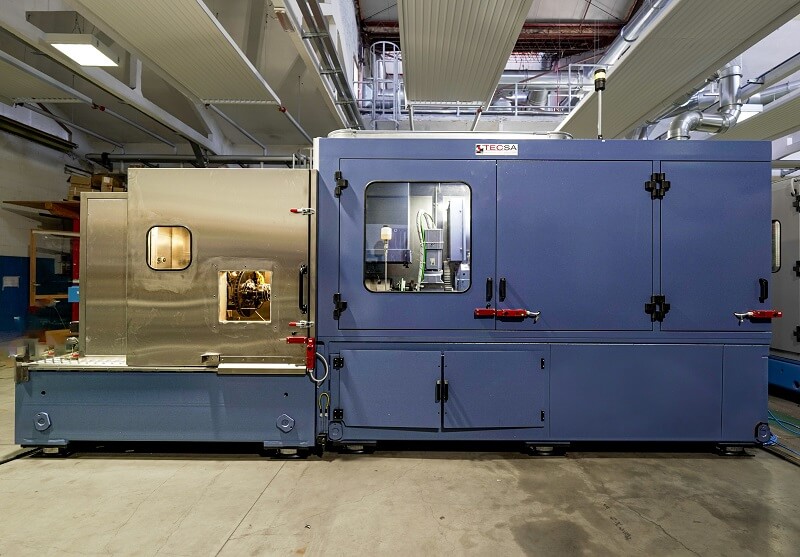A state-of-the-art solution for brake system testing
The brake system is one of the key elements in the safety of any vehicle. To ensure optimum performance and compliance with industry regulations, it is essential to conduct extensive tests on the brake system components. In this respect, the TC 100 dynamometer with two flywheels is a state-of-the-art solution for various types of brake system testing.

Performance tests
The TC 100 dynamometer is designed to conduct performance tests on automotive vehicles. Thanks to its configuration with two flywheels, one fixed and one moving, it is able to simulate different inertias, enabling accurate and reliable tests. The High Speed version of the TC 100 is ideal for motorbikes, while the Low Speed version is suitable for vehicles in the automotive industry.
Configurations of the TC 100
The TC 100 High Speed is equipped with a motor with a power output of 250 kW and a maximum speed of 3000 rpm. It has an inertia comprising a fixed flywheel of 30 kgm2 and a moving flywheel of 40 kgm2, allowing inertia in the range from 5 to 250 kgm2 to be simulated. The maximum braking moment is 3000 Nm, with a maximum pressure of 200 bar. The modulated fan system can reach a maximum flow of 3000 m3/h.
The TC 100 Low Speed, on the other hand, is equipped with a 315 kW motor and a maximum speed of 2500 rpm. Its inertia consists of a 50 kgm2 fixed flywheel and a 50 kgm2 moving flywheel, to simulate inertias in the range of 5 to 300 kgm2. The maximum braking moment is 5000 Nm, with a maximum pressure of 200 bar. Again, the modulated fan system can achieve a maximum flow of 3000 m3/h.
Additional options
The TC 100 dynamometer offers a number of additional options to meet various testing and analysis needs. Some of these options include:
- Climate control system: allows the temperature in the test environment to be controlled from -40°C to +50°C, enabling testing in extreme climatic conditions.
- Hand brake: the dynamometer can be equipped with a hand brake with a maximum force of 5000 N, allowing specific tests on this component.
- Spray system: allows water, salt water or snow to be sprayed onto the brake system, simulating driving conditions in different environmental situations.
- Static friction: the TC 100 dynamometer can measure static friction up to a maximum of 6000 Nm at 20 rpm.
- NVH (Noise Vibration Harshness): enables analysis of noise, vibration and harshness of the braking system.
- DTV (Disc Thickness Variation): Allows the thickness variation of brake discs to be measured, using 2 to 6 measurement channels.
- Oil absorption measurement: allows you to assess the absorption of oil by the brake pads.
- Residual torque system: Allows the residual torque of the braking system to be measured.
- Hand-brake actuator: allows the function and performance of the handbrake to be tested.
- EPB trolley (electric handbrake): Allows you to simulate the operation of an electric handbrake.
- Video camera: allows tests to be recorded so that the results can be analysed and evaluated more accurately.
NVH tests and research
In addition to performance tests, the TC 100 dynamometer can conduct NVH (Noise Vibration Harshness) tests to assess noise, vibration and harshness of the brake system. Thanks to its advanced configuration and the additional options available, the TC 100 offers a wide range of possibilities for research and new product development in the brake system sector.
